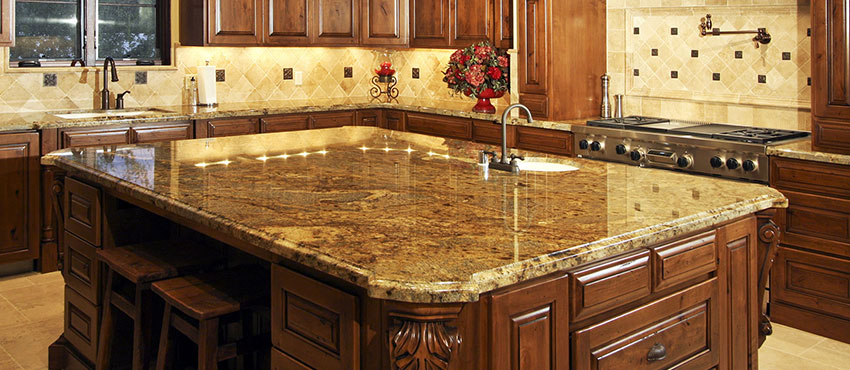Feb
How Are Granite Countertops Attached?
- 2021
- bruce
So you have been visiting your friends’ houses, and you can’t stop admiring their countertops. They are beautiful, strong and they appear as if they are attached to the cabinets. How are granite countertops attached? You wonder.
Well, here is the answer. After the granite technicians have placed the countertops on the cabinets and ensured everything is leveled, they apply a bead of silicon at the countertop and cabinet intersections and the stone’s underside. In most situations, this is enough to hold the countertop in place.
If you live in an older house or you have an uneven floor and uneven cabinets, the contractors install wood shims to secure the countertops.
For the seams, contractors use epoxy to cement the granite pieces together. To hide the seams, the technicians blend and color the epoxy at the site before applying it.
Tips for professional granite countertop installation
For a strong and durable countertop attachment, you have to ensure your countertops are professionally installed. How do you do this? Here are tips to follow:
Buy a high-quality granite slab.
Everything begins here. There is no way you are going to have quality countertop installation if your slabs are of poor quality. Thankfully, it’s easy to tell whether the stone is good or poor quality.
The first thing to look for is the price. If you visit different stores and find a store selling granite at a price lower than the average price in the other stores, chances are it’s fake and won’t give you the results you are anticipating.
The next thing to look out for is the appearance of the stone. Granite is natural, so there is no way it can have the same pattern throughout. So if the slab you are looking at has an even pattern, it’s most likely a fake and not worth going for.
It’s also possible to tell the quality of the stone by taking a look at its porosity. Granite is naturally porous hence it will absorb water applied on the surface. Cheap, poor-quality granite won’t absorb the water.
To test the stone’s porosity, apply a small amount of water to the stone, and if the water absorbs within a few minutes, the slab is real granite, but if the water doesn’t absorb at all, the granite is most likely fake.
Other things you can do to tell you have a quality slab in your hands is to tap on its surface with a hammer. Real, good quality granite will produce a ringing sound, while a fake granite will make a small click sound.
The countertop seams can also help you know whether the stone is genuine and worth buying. If the countertop seam patterns are the same on both sides, the slab is most likely fake.
Work with an experienced professional
You can buy the highest quality and most expensive granite countertop slab, but there is no way your countertops will look good if you work with contractors that don’t know what they are doing.
Good quality granite slabs go for thousands of dollars, and you don’t want them damaged, do you? So, only work with experienced professionals.
A great place to find these professionals is from friends and relatives. If none has installed countertops recently, go online but don’t hire the first company that shows up in the search engines.
Remember, good SEO isn’t a reflection of the company’s quality of services, so interview several companies and settle on the best one. As a rule of thumb, hire companies with references.
Prepare the cabinets for granite installation
3 cm thick countertops don’t require any preparation other than to level and secure the cabinets. If you are installing 2 cm thick countertops, it’s wise you apply ¾ inch plywood to provide additional support.
Take good care of the countertops.
Your work isn’t done when granite installers install the countertops. Remember, the countertops can still come apart if you don’t take good care of them. To keep your slabs in top shape, protect them from damage, avoid placing heavy and hot items directly on the surfaces. Also, avoid standing or sitting on the slabs. To keep off stains, seal the countertops at least once a year.


